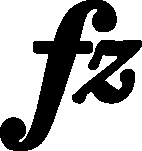



The comparison of the notation of bars 88-93 with their repetitions (bars 94-96, 122-127 and 128-130) allows us to notice that it was only the first appearance of this phrase that was written by Chopin with maximum precision – staccato dots over the chords in the L.H. and tenuto in the R.H. (bar 89) are present only in bars 88-89, they are already absent in bars 94-95 and later on. The accents and slurs in the L.H. are still present for the second time (bars 94-96), then only a single pair of an accent and a slur appears in the reprise twice, bars 200-201 and 206-207. It leads to a conclusion that Chopin could have had an intuitive hierarchy of obviousness of the markings:
- the staccato of the chords and the tenuto of the e2 crotchet, on which the lively melody stops, directly result from the invigorating character of the dance and the rhythmic value of this long note;
- the accents and slurs are already less obvious, but equally important for the image of music, which induced Chopin to repeat them a few times.
Moreover, it cannot be excluded that Chopin considered the precise markings in the L.H. in bars 118-119 ( , staccato dots, slurs and accents) to be a sufficient reminder of the basic articulation and accentuation of the accompaniment. Taking this into account, in the main text we do not suggest too many additions of marks in analogous places (e.g. the reviser of EE2 reasoned differently – see the adjacent note).
, staccato dots, slurs and accents) to be a sufficient reminder of the basic articulation and accentuation of the accompaniment. Taking this into account, in the main text we do not suggest too many additions of marks in analogous places (e.g. the reviser of EE2 reasoned differently – see the adjacent note).
On the other hand, certain inconsistencies in the markings of the final fragments of the exposition and reprise suggest that Chopin did not analyse this issue systematically, hence he could have omitted some of the markings by inadvertence. It concerns, e.g. the  sign in bar 122, which is present in analogous bar 234, or the
sign in bar 122, which is present in analogous bar 234, or the  hairpin in bar 127, present in bar 239. Therefore, in the main text we suggest adding these markings (also
hairpin in bar 127, present in bar 239. Therefore, in the main text we suggest adding these markings (also  in bar 126) in the belief that omitting them in a performance would impoverish or, to a certain extent, distort the atmosphere of the music.
in bar 126) in the belief that omitting them in a performance would impoverish or, to a certain extent, distort the atmosphere of the music.
Compare the passage in the sources »
category imprint: Editorial revisions
notation: Verbal indications



